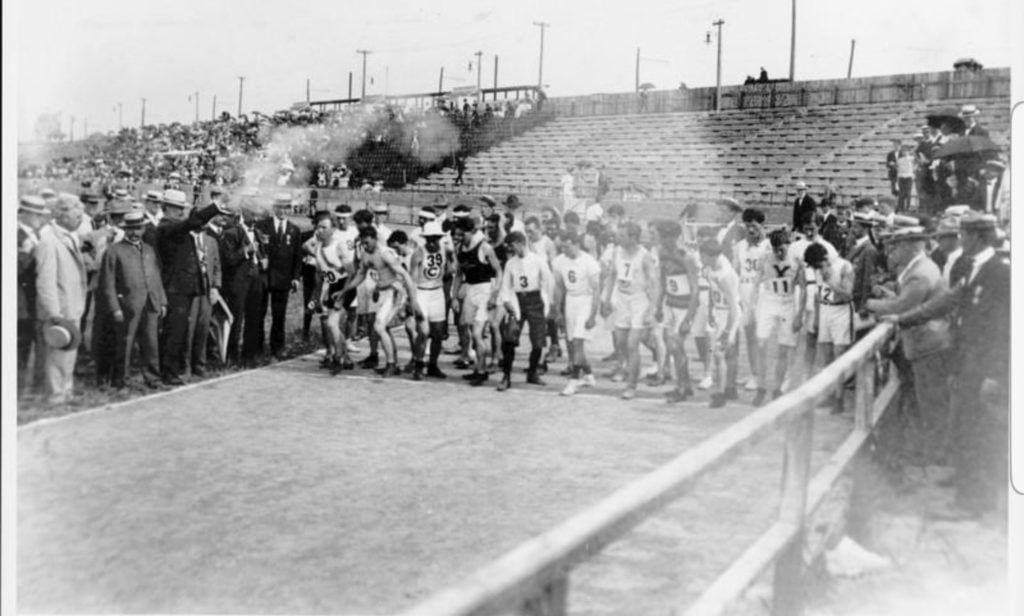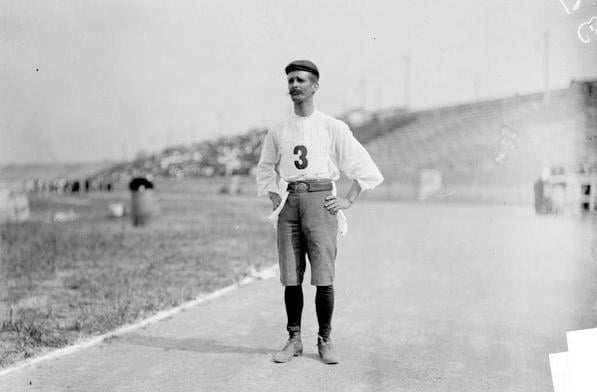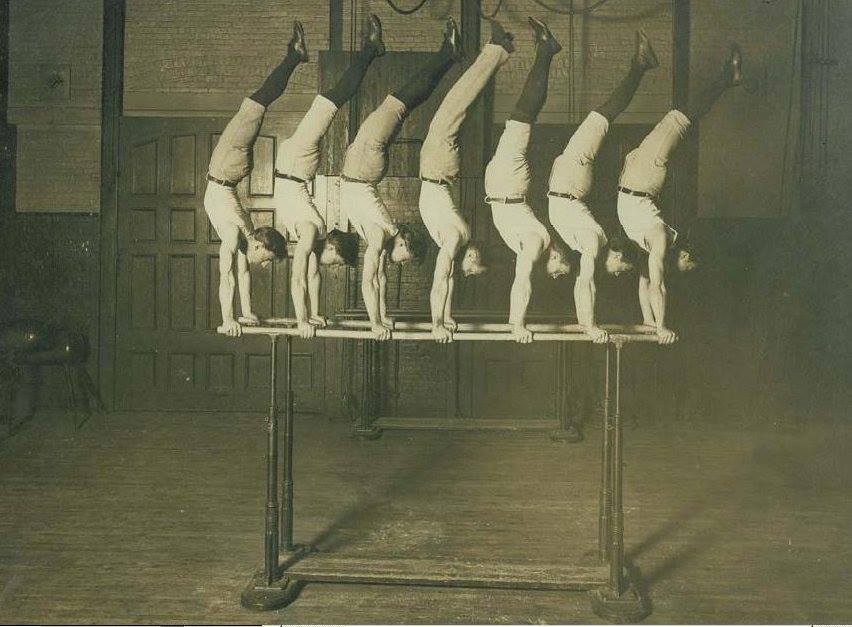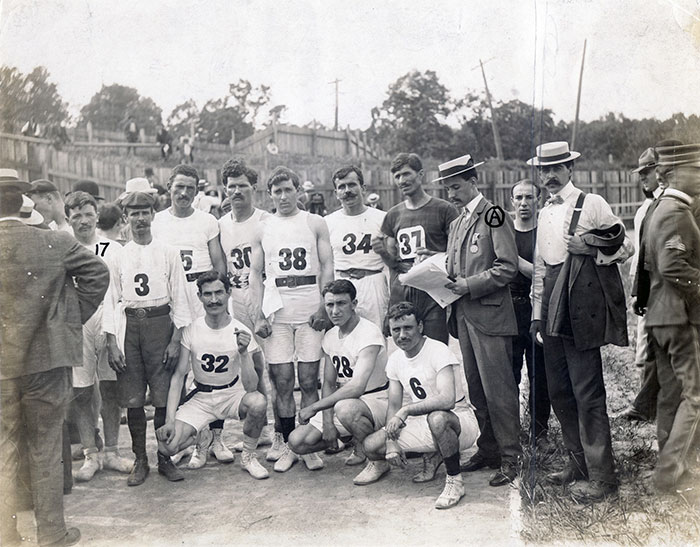
Nearly everyone worldwide loves the spectacle of the Olympics, with its incredibly talented athletes showing their prowess in a glittering spectacle — but the 1904 Olympics were not a shining moment in worldwide sport, and indeed appear to be one of the worst Olympic Games fiascos in history.
The following story is not often related in the historical footage of past Games that we view every four years as we settle in our living rooms to watch the world’s greatest athletes compete for global honors.
And truthfully, much about the St. Louis Olympics of 1904 belongs in the dustbin of history.
From the blatant human experimentation that was part of the Marathon — in an effort to determine the exact effects of extreme dehydration — to the apparent winner being disqualified because he took a car ride for part of the race, the Games had low points that have rarely been equaled since.
Although the large city of Chicago had been awarded the 1904 Olympics, St. Louis, which was celebrating the World’s Fair that year, wanted to host the Games alongside that great event, which was in part a celebration of the Centennial of the US’ Louisiana Purchase in 1803.

St. Louis got what it wanted, snatching away the Games from the much larger city — but circumstances — and human nature — conspired to make these Olympics without a doubt one of the strangest and most disturbing in history, with possibly the worst Olympic games fiasco ever.
These, the first Games ever to be held in the Americas, were overshadowed from the start as tensions leading up to the Russo-Japanese War caused many athletes to be unable to travel to the States.
In the end there were only 62 sportsmen from just twelve other nations around the world who ended up competing against 589 American and Canadian athletes in the first Games held outside Europe.

The 1904 Olympics signature event, the marathon, was revived in the first modern Olympics in 1894 as a way to honor the classical heritage of Greece and to cement the connection between the ancient and modern worlds.
But the marathon that year unfortunately took more of its tone from the fair that was going on in St. Louis, rather than the lofty ideals of Baron de Coubertin, the originator of the modern Games, almost leading the event to be banned for good.
Although some of the runners were accomplished marathoners who had either won or placed in the Boston Marathon or in previous Olympic marathons, most of the athletes were middle-distance runners — and other assorted characters who almost did the sport in with their antics.
While respected American marathoners Sam Mellor, A.L. Newton, John Lordon, Michael Spring and Thomas Hicks were among the favorites, individuals such as bricklayer Fred Lorz from Brooklyn were brought in after simply finishing a five-mile race to apparently add some flavor of the everyman to the vaunted competition.

Ten Greek men were also added to the roster of the 1904 Olympics marathon — apparently in a nod to the ancient roots of the race — although they admitted they had also never run a marathon.
Two men from the Tsuana tribe of South Africa who had traveled to St. Louis to take part in the South African World’s Fair exhibit also agreed to take part as well, but they arrived at the starting line barefoot.
A Cuban whose training had in part consisted of doing rounds as a mailman, named Félix “Andarin” Carbajal, also took part in the marathon. He had raised money to come to the States by demonstrating his athleticism — once even traversing the length of the island.
But his Olympic adventure went a little sideways after his arrival in New Orleans, where he immediately lost all his donated funds in a dice game. Carvajal then had to walk and hitchhike just to get to St. Louis.
At only five feet tall, he still presented a natty figure at the starting line, attired in a white, long-sleeved dress shirt, long, dark pants, a jaunty beret and a pair of stout leather boots. A fellow Olympian luckily took pity on him, somehow locating a pair of scissors and cutting Carbajal’s trousers off at the knee for greater mobility — and a little respite from the scorching heat and humidity.
Why the 1904 marathon was the worst Olympic games fiasco
The marathon proceeded, with Carvajal soon out ahead in the race despite stopping to chat amiably with spectators — and even snatching some peaches from a spectator’s car when he became famished and dehydrated after his initial efforts.
Later on in the grueling event, Carvajal spied an apple tree and stopped to eat some fruit — which unfortunately turned out to be rotten, upsetting his stomach. Amazingly, he took some time off during the race to nap after his stomach upset, and even then was able to finish fourth.
But even this character and his exploits weren’t the strangest things about the 1904 Olympics.
Unfortunately, the most bizarre aspect of the St. Louis Games was the fact that the men taking part in the Marathon were unwitting subjects in an experiment on the effects of dehydration — and the circumstances of the race were chosen to exacerbate their suffering.
The race was timed to begin in the hottest part of the afternoon, when it was in the 90s — and with only two watering stops along the 24.85-mile-long course.
Not only that, but the runners were tasked with traversing seven hills, up to 300 feet in elevation, over roads that in places were covered in cracked stone or inches of dust — a course one official called “the most difficult a human being was ever asked to run over.”
Making the marathon’s difficulty almost comical, the athletes were also forced to constantly dodge cross-town St. Louis traffic, including delivery wagons, railroad trains, trolley cars and even people out walking their dogs.
As planned by James Sulllivan, the main organizer of the 1904 Olympics, there were only two spots where athletes could revive themselves with water, from a water tower located at the six mile mark and a roadside well at 12 miles.
Sullivan’s experiment called for the minimizing of fluid intake to test the limits and effects of dehydration — which admittedly was a burgeoning area of research at that time. There were cars carrying coaches and even physicians which motored alongside the runners, seemingly adding an air of safety and oversight to the race — but they were not allowed to refresh the runners with the water that they so desperately needed.
Dust on roads compounded thirst, led to internal bleeding
Not only that, but the vehicles kicked up the inches of dust that coated the roadways, forcing it into the lungs of the runners, even making one have internal bleeding from its effects.
William Garcia, from California, almost became the first fatality during an Olympic marathon after he collapsed on the side of the road and was later hospitalized after hemorrhaging from the dust that had coated his esophagus and even eroded the lining of his stomach.
Officials later charged that if he had gone without help for one more hour longer he might have bled to death. Another marathoner, John Lordon suffered a bout of vomiting due to the intake of dust and he abandoned the race. As if that weren’t enough, Len Tau, one of the South African runners, was chased one mile off course by wild dogs who were on his heels all the way.
Lorz, the bricklayer from Brooklyn, was plagued by cramps after enduring the heat and humidity and felt no compunction about hitching a ride in one of the accompanying automobiles for his pains; he was even seen waving at spectators and fellow runners as he passed them on his way toward the finish line.
Drugs entered the Olympic scene at 1904 Games
Hicks, an established marathoner who was one of the American favorites, began begging his support crew for desperately-needed water at the 10-mile mark. However, adhering to Sullivan’s rulings as part of the dehydration experiment, they cruelly refused him, instead simply sponging out his mouth with water.
Perhaps in the ugliest moment in perhaps the worst Olympic games’ fiasco of all time, with several miles to go in the marathon, Hicks’ support team fed him a concoction of egg whites laced with strychnine, in the first recorded instance of drug use in the modern Olympics.
At that time, small doses of strychnine were commonly used a stimulant, and of course back in those days there were no rules whatsoever regarding performance-enhancing drugs. Amazingly, Hicks’ team also carried a flask of French brandy in case that was deemed to be needed — but decided to wait until they thought he really needed a belt of it later in the race.
The marathon to beat all other marathons in weirdness proceeded with a recovered Lorz emerged from his 11-mile car ride refreshed and ready to finish the race.
However, one of Hicks’ support crew saw what Lorz had done and ordered him off the course. The bricklayer kept running despite this, and he finished with a time of just under three hours.
Marathoner’s car ride leads to boos, protestations of being a “joke”
Naturally, the assembled crowd was overjoyed to see an American winning the marathon at home, erupting with chants of “An American won!” Alice Roosevelt, the 20-year-old daughter of President Theodore Roosevelt, had the honor of placing the laurel wreath upon the winner’s head.
She was just about to do so and bestow the gold medal on him when someone in the crowd shouted that he was an impostor and had not indeed completed the entire race on foot.
With the triumphant cheers now turning to boos, the bricklayer took it all in stride, maintaining that he never even imagined he would accept the gold medal and that he finished only for a “joke.”
Meanwhile, other racers were still out on the course — including the drugged-up Hicks, who was himself near death due to the strychnine he had ingested.
His face was seen to have become ashen and slack. However, he got a second wind after he heard that Lorz had been disqualified, and forcing his legs into a trot.
Incredibly, his trainers gave him yet another swig of the disgusting strychnine/egg white concoction; but now they added some brandy to give it more “oomph.”
Mercifully, they also soaked his body and head with water, allowing him to revive yet further. After this treatment, he appeared to get a second wind and even quickened his pace.
Marathon winner barely survives 1904 event
“Over the last two miles of the road,” according to race official Charles Lucas, “Hicks was running mechanically, like a well-oiled piece of machinery. His eyes were dull, lusterless; the ashen color of his face and skin had deepened; his arms appeared as weights well tied down; he could scarcely lift his legs, while his knees were almost stiff.”
The unfortunate marathoner began hallucinating, believing that the finish line was actually 20 miles away. During the last mile he plaintively begged for something to eat, and then to be able to lie down.
Hicks drank a bit more brandy given to him by his team but he refused the tea they subsequently tried to give him. He somehow was able to swallow two more egg whites — which at least allowed him some fluids. He could only walk up the first of the last two hills on the course, but was able to jog down the other side.
Finally making it into the stadium, Hicks valiantly attempted to run again but was reduced to shuffling — prompting his trainers to pick him up and carry him over the finish line, holding him on their shoulders while his feet still moved back and forth.
Race officials mercifully judged that the runner had been through enough, and he was declared the winner in the slowest marathon ever run.
A team of four doctors worked for one solid hour to enable Hicks to revive enough just to be able to leave the finish line area. By that time, official noted that he had lost eight pounds during the race.
Hicks had somehow survived the debacle, saying later “Never in my life have I run such a tough course. The terrific hills simply tear a man to pieces.”
Although there were moments of real triumph, befitting the lofty goals of the modern Olympic movement, such as gymnast George Eyser winning six medals, including three gold, despite competing with a wooden leg, the 1904 St. Louis Games have gone down in history as the worst Olympic games’ fiascos in the history of the modern era.
And although the current three-medal format, awarding gold, silver, and bronze for first, second, and third places, was introduced at these Olympics, with the great athlete Frank Kugler winning four medals in freestyle wrestling, weightlifting and tug of war, the St. Louis iteration of the Games has gone down in history as not only one of the most shameful displays of poor sportsmanship, but also one of the worst Olympic games fiascos to ever transpire.
Here’s hoping that the postponed Tokyo 2020/21 Olympics, already beset with a host of problems stemming from the coronavirus pandemic, will not dethrone 1904 as one of the worst Olympic games fiascos, with the threat of virus spread, but will be able to rise above them and provide the world with a much-needed dose of optimism and escape as we emerge from our own dark times of the recent past.
See all the latest news from Greece and the world at Greekreporter.com. Contact our newsroom to report an update or send your story, photos and videos. Follow GR on Google News and subscribe here to our daily email!



